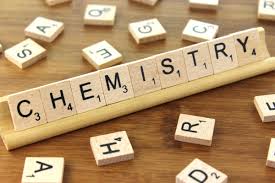
Chemistry
Glossary
1- Acid – Compound that gives off H+ ions in solution.
2-Base – Substance which gives off hydroxide ions (OH-) in solution.
3-Catalyst – Substance that speeds up a chemical process without actually changing the products of reaction.
4-Density – Mass per unit volume of a substance.
5-Effusion – Movement of gas molecules through a small opening
6-Geiger counter – Instrument that measures radiation output.
7-Hydrolysis – The reactions of cations with water to produce a weak base or of anions to produce a weak acid.
8-Ion – Removing or adding electrons to an atom creates an ion (a charged object very similar to an atom).
9-Mass number – The number of protons and neutrons in an atom.
10-Neutron – A particle found in the nucleus of an atom. It is almost identical in mass to a proton, but carries no electric charge.
11-Oxidation number- A number assigned to each atom to help keep track of the electrons during a redox-reaction.
12-pH – Measures the acidity of a solution. It is the negative log of the concentration of the hydrogen ions in a substance.
13-Quantum numbers- Set of numbers used to completely describe an electron.
14-Reduction reaction – A reaction in which a substance gains at least one electron.
15-Sigma bonds- A type of covalent bond in which most of the electrons are located in between the nuclei
16-Thermodynamics – The study of temperature, pressure, volume, and energy flow in chemical reactions.
17-Van der Waals equation – An equation for non-ideal gasses that accounts for intermolecular attraction and the volumes occupied by the gas molecules.
18-Wavelength -On a periodic curve, the length between two consecutive troughs (low points) or peaks (high points).
19-Avogadro’s number -Number representing the number of molecules in one (1) mole: 6.022 * 1023.
20-Combustion -When substances combine with oxygen and release energy.
21-21-Electrolysis -Changing the chemical structure of a compound using electrical energy.
